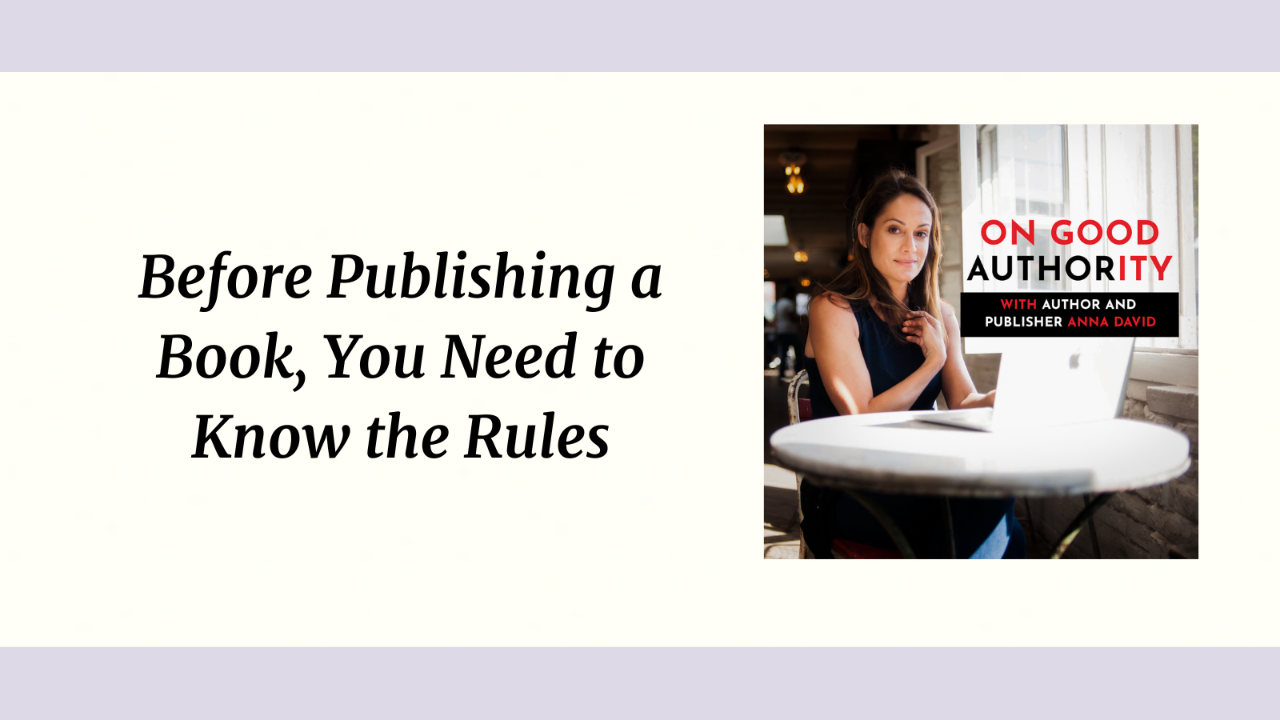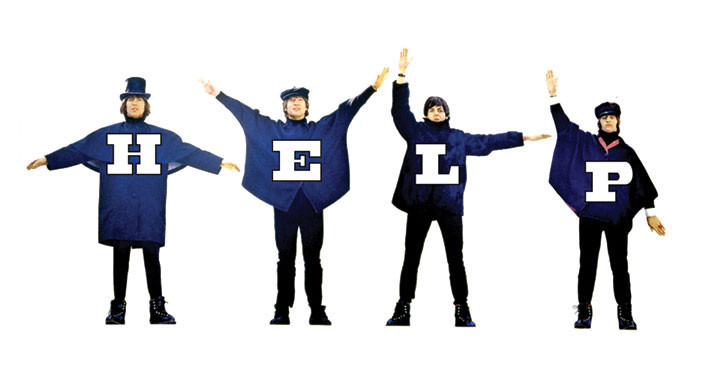
Before Publishing a Book, You Need to Know the Rules
The number of books on Amazon with horrible covers and three or four reviews is uncountable.
Like I said about the guy in the tube top: just because you can doesn’t mean you should.
In other words, you can dash a manuscript off, have someone from Fiverr lay it out and slap on a Canva-created design. I even recommend that path for those who have absolutely zero budget.
But I’m not talking to you when I say that.
I’m reasonably certain you want better than that.
If you’ve made it this far, I’m reasonably certain you’re only interested in excellent.
And that means following the rules.
So what are these rules?
1) Create an excellent manuscript.
I don’t care if it’s 100,000 words or 1,000. It’s not about length. In fact, as a publisher recently told The Financial Express, “We publish increasingly for readers who are more accustomed to and prefer short-form reading, thanks to the easy availability of books and journalistic literature on smartphones and digital devices.”
So: length doesn’t matter. Quality does. If you’re not a writer, please hire one!
2) Have your book professionally edited.
You, the writer, should not be the editor.
I learned this the hard way (and I’ve edited numerous books and thousands of articles).
I learned this when I finished my book of essays, How to Get Successful By F*cking Up Your Life, and then had it laid out and printed.
I received the 100 copies from the printer.
And then I caught mistake after mistake after mistake — despite the fact that I’d already gone through it repeatedly.
I had a professional editor read it and then had the book laid out and printed again.
I had to toss those 100 copies. I may as well have set the money on fire.
That’s why at Light Hustle, editing is a multi-step process:
- We do a comprehensive edit, which can mean reconceiving the entire book.
- We do an edit on that edit.
- We do a copy edit, which means we send it to a certified copy editor.
- We do an edit to make sure we catch everything the copy editor misses.
Yes, even people who edit for a living, who have in fact been certified in it, make mistakes.
They make mistakes because they are human.
As a human, you should hire an editor and a copy editor and then an editor after that.
Trust me, it’s worth the added expense.
While it’s inevitable that a published book will have some typos, I know when I see a bunch of them, I lose immediate respect for the author. I usually close the book right then. Do you really want to work that hard to have people disrespect or dismiss you?
3) Have it laid out by a layout expert.
Yes, there are people on Fiverr who can do this for $5. And there are people who charge thousands. Find someone in the middle.
4) Have a book cover designer create the cover.
Because of Photoshop, everyone’s a designer these days. But you don’t want everyone. You want a book cover designer. After a nightmarish experience with someone who came from the advertising world and called himself a book designer but had absolutely no idea how to design a cover that fit Amazon’s requirements, we decided to only work with designers who’d worked for the Big Five publishers.
Here’s what can happen if you don’t:
- You upload your cover.
- Amazon accepts it.
- You get an email from Amazon 48 hours later that explains that your cover was rejected because it doesn’t meet certain specifications but it neglects to explain which of the specifications it means.
- You have your designer fix it.
- It happens six more times.
It actually happened seven more times with the designer I’m talking about. Each time, perhaps because he was embarrassed by the fact that he couldn’t do something he’d told us he could, he got increasingly difficult so we were not only caught in a difficult situation with a publisher but also dealing with an incredibly nasty designer.
Trust me, you don’t want that. (That being said, some people want to release a book at the lowest possible cost; that’s why the final bonus in this book is a guide to releasing a book for almost no money, which walks you through how to design your cover yourself.)
5) Get all your release elements in place.
Here are some of the things I recommend doing the week of your release:
- Post Canva-created quotes from your book on Facebook, Twitter and/or Instagram (wherever you spend the most time and energy)
- Do a Facebook Live “release party” or something live that you can then convert to 9:16 size and also post as an IGTV
- Create a promotional video using the Clips app
- Ask influencers and friends to promote your book; provide them with whatever copy and material will help them
- Change your Facebook, Instagram, Twitter, LinkedIn, YouTube and any other images to include your book cover. Make those clickable whenever possible and once your book is available, paste your Amazon link there
- Re-do your site to feature your book cover on the home page or create a separate site for your book
- Write out a series of emails to send people but rather than making them all sales-y (“Hey, I have a book” followed by “Hey, did you buy my book?”) make them newsy…have one that announces how well it’s selling, another that alerts them to a contest you’re running or another that announces that you’re doing a Facebook Live
- Run a contest. Give away Starbucks gift cards, a consultation with you or anything else you can think of to incentivize people to buy or share about your book.
6) Gather an Advanced Reader Team (ART).
What this means: Once you have a book ready to be released, the most effective way to guarantee success (in addition to uploading it to Amazon with keywords and in categories specifically designed to make it hit the top of the bestseller lists) is to put together and nurture an Advanced Reader Team that can review your book right before you announce that the book is available to the general public.
These can NOT be members of your family or close friends because Amazon not only forbids reviews from people it considers biased but also scans for potential relationships between reviewer and author and deletes those that appear to be from those close to the author.
(It happened to me! A girl I know but who isn’t a particularly close friend of mine reviewed one of my books and then got an email from Amazon saying that they’d concluded that the review was biased and were deleting it. Apparently, there are both bots and people on the Amazon team always scanning for these sorts of things.)
Advanced Reader Team members should instead be people who are aware of you, support your work, want to see you succeed and are interested in your book topic.
If you don’t have a newsletter list, use your social media or whatever other tools you have to find these people. If you have a newsletter list, send the offer to them first and then use social media and all the other tools.
You’re probably going to need to motivate and thank this group, and do keep in mind that roughly 20% of ART members end up coming through and actually writing reviews. That means: if you’re aiming for 20 reviews to be posted on your release date try to gather a group of 100 people.
7) Nurture your Advanced Reader Team.
Once you find them, here’s what I recommend: create a Facebook, Slack or WhatsApp group for them — some place where you can communicate with them easily.
At least a month before your release date, create a BookFunnel account ($20 for a year) and upload your book there.
Send your ART members a link to that and ask them to start reading and even writing their review but to hold onto it until your release date.
Over that month, keep in touch with them through a series of emails.
For my books, I offer Advanced Reader Team members different online courses I’ve created to thank and incentivize them. Try to think of your version of that.
To be clear: you are NOT “paying” them to write a positive review (in my opinion, it’s actually better to have a mixture of positive and medium reviews instead of all positive reviews; all positive reviews scream author-imposed; mixed reviews feel more legit).
You are giving them a gift to thank them for supporting you.
8) Get your ART reviews up before you even announce the release.
When you load your book onto Amazon, set the cost at .99. Don’t worry — you’re not selling your book for that. This is just the price for your Advanced Reader Team.
Three days before your official release, alert your ART that the book is available and send them the link. Ask them to go purchase the book for .99 and write a review.
(While people can review without purchasing the book, they need to have made the purchase for the review to count as Verified and have the little Verified checkmark next to it. Not only does this look a lot more legit but it also matters a lot more to Amazon than a non-verified review.)
And remember how I just said that the people on your ART should be interested in your topic?
Here’s why this is important:
They need to have a history of buying books like yours on Amazon for Amazon to find their shopping experience relevant. If you gather a bunch of people who only read Victorian romance books to buy and review your book about starting a business, that’s not going to help.
9) Announce your book.
Use all those release elements you got in place in step 5. And then keep using them.
You may be saying, “Dear God, why would I go through all that? I already did the book! Now I have to do all this extra work?”
Here’s what I have to say: there’s a massive difference between having a book out and having a bestselling book out. Sure, some books can just hit but wouldn’t you rather be in control of your destiny? I know I would.
WANT TO WRITE A MEMOIR? DOWNLOAD MY ONE-PAGE MEMOIR STRUCTURE CHEAT SHEET HERE.
 HERE'S HOW I CAN HELP YOU WHEN YOU'RE READY:
HERE'S HOW I CAN HELP YOU WHEN YOU'RE READY:
→ You can get my 5 steps to creating a life-changing book
→ You can apply for an Authority Experience to have us create the concept and promotion plan for your authority-building book
→ You can apply for a call to work with Legacy Launch Pad (our publishing packages range from $7k-150k)


